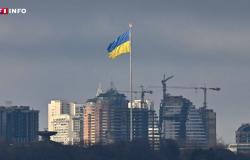**Introduction**
The Vaca Muerta site, located in the Neuquén basin in Argentina, is recognized worldwide for its considerable shale gas and oil resources. While its potential arouses export ambitions, major challenges remain, particularly in infrastructure, cost competitiveness and energy policy.
**
Immense potential, but limited by infrastructure
**
Vaca Muerta is home to reserves estimated at 308 Tcf (trillion cubic feet) of natural gas and 16.2 billion barrels of oil. Production reached 1.2 Bcf/d (billion cubic feet per day) in 2023, marking a steady increase thanks to technical advances and investments. However, current transport and processing capacities are insufficient.
Pipelines, like President Néstor Kirchner's, add only modest capacity in the face of massive export needs. Furthermore, the country lacks essential infrastructure such as liquefaction (LNG) terminals, which would require billions of dollars of investment and years of construction.
**
Production costs and international competition
**
Although production costs in the Neuquén Basin have declined, they remain higher than those in major producing regions such as the Permian Basin in the United States. Dependence on imported equipment and limited economies of scale exacerbate this gap.
In the global liquefied natural gas (LNG) market, Argentina must compete with countries like Qatar, Australia and the United States, which can supply gas at significantly lower prices. Price competitiveness represents a major obstacle to Argentina's entry into this market.
**
Unstable regulation and political challenges
**
Argentina's regulatory environment is marked by frequent changes in tax policies, export restrictions and exchange controls. These uncertainties deter foreign investors, essential for financing export projects.
In addition, the domestic market remains dependent on subsidies, notably via the Gas Plan, which complicates the alignment of local prices with those of the international market. Bureaucratic delays and local opposition also slow progress on infrastructure projects.
**
Economic challenges and national priorities
**
Argentina, facing inflation topping 100% a year and mounting debt, is struggling to attract the capital needed to realize its ambitions. At the same time, the country must balance meeting domestic energy needs with its export projects, particularly in winter when gas imports increase.
Neighboring markets, such as Brazil and Chile, offer regional export opportunities through existing pipelines. However, these outlets remain insufficient to fully exploit the potential of Vaca Muerta.
**
Prospects and potential solutions
**
To turn its ambition into reality, Argentina will have to overcome several structural obstacles. Public-private partnerships could accelerate the construction of critical infrastructure, while regulatory reforms are needed to stabilize the legislative framework.
Improving relations with foreign partners, combined with a prioritization of macroeconomic stability, is key to attracting investment. Finally, strategic targeting of regional markets in the short term could provide a solid foundation before global expansion.





